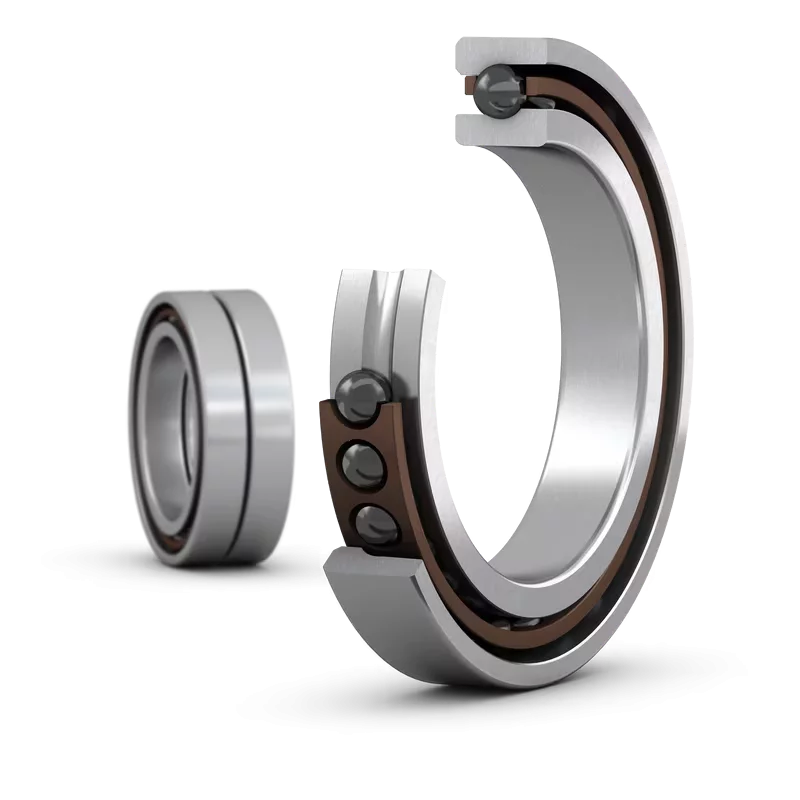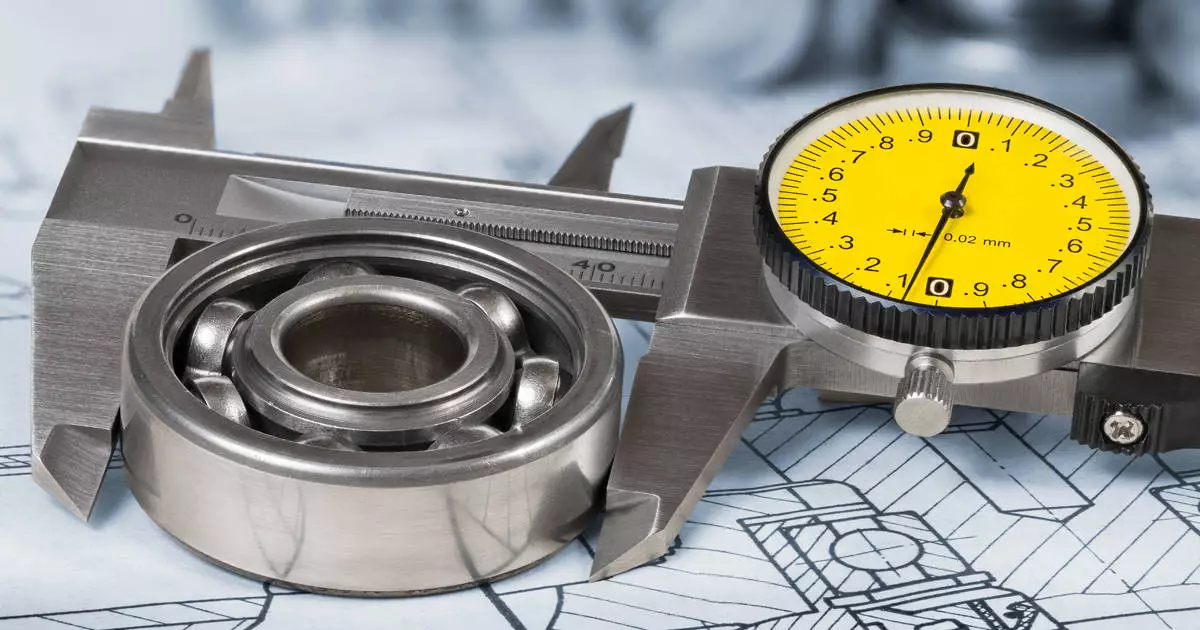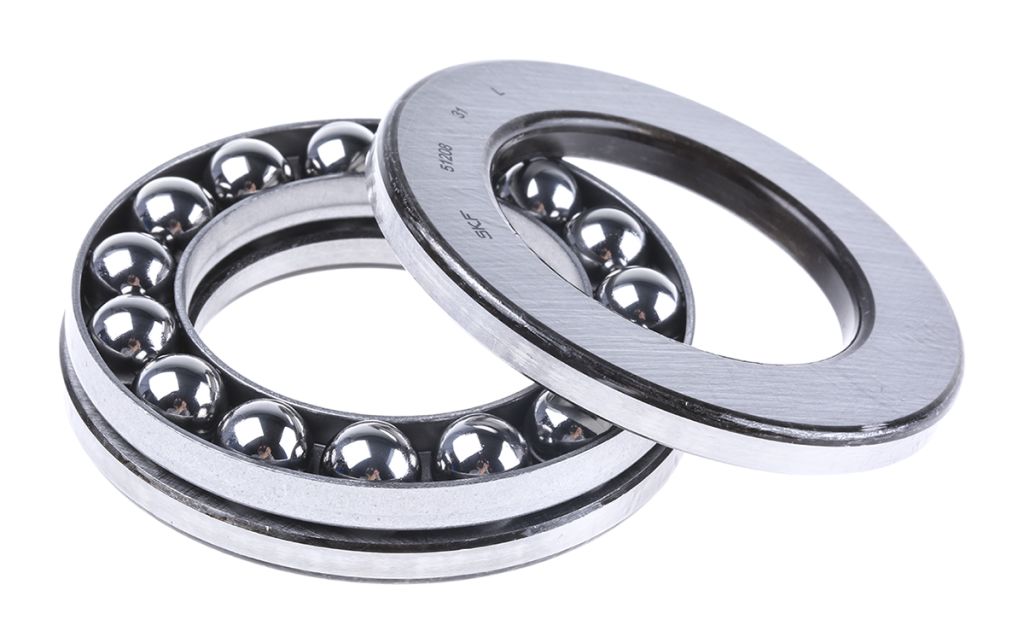
Unlocking the Advantages of Sliding Contact Bearings
Sliding contact bearings, also known as plain bearings, are a type of bearing that operates by sliding rather than rolling. Sliding bearings have been used for centuries, and are designed in applications where low speeds, high loads, and limited space are a factor.
Sliding Contact bearings are suitable for heavy static and dynamic loads at relatively low speeds, multi-directional movements, and misalignment.
In this article, we will explore the advantages of sliding contact bearings, the different types available, their applications, installation, maintenance, and the factors to consider when selecting them.

SKF, INA, and others offer plain bearings in a wide variety of materials. Every design has its own purpose with advantages and benefits. The straight bore or sleeve bearing is good for rotating, oscillating, linear motions, and radial loads, while the flanged version is useful where you have axial loads in one direction only. Both bushing designs require very little space, are cost-effective, and available in many sizes.
Advantages of Sliding Contact Bearings
Sliding contact bearings allow for relatively low friction motion between two surfaces. Sliding contact bearings are also simple in design, usually consisting of two surfaces that slide against each other.
As you may know, the product of the normal load and the coefficient of friction determine the actual level of motion resistance, hence why designers look to lower the coefficient of friction. The selection of materials that lower the friction force will improve the efficiency of the system. Using different materials with different tolerances and fits all play a role in creating the best design. Additionally, the pressure created to the contact areas by the loads will cause the material to wear, so the lower the contact pressure and sliding velocity the longer bearing life can be expected.
In general, sliding contact bearings operate most efficiently when the two mating parts are dissimilar materials. Bearing manufacturers will commonly create outer races from steel with a bronze or teflon lined inner ring. In cases where the same material is used, one of the components would be hardened so that the particles that ingress into the races will be forced into the softer material, where they embed and slow down the abrading of the bearing races.
Because of the sliding motion and cross section, the design allows for a higher load capacity than other types of bearings, making them suitable for heavy-duty applications. Additionally, sliding contact bearings require minimal maintenance, making them a cost-effective option for many applications.
Types of Sliding Contact Bearings
Spherical Plain Bearings are ideal for absorbing shock loads and capable of varying degrees of misalignment. The inner ring has a sphered convex outer diameter while the inner ring is a sphered convex inner diameter.
Spherical Plain bearings are self-aligning and are excellent choices for oscillation, tilting, and slewing movements. This bearing is suitable for use in slow sliding speeds and heavy loading.
SKF’s steel/steel spherical plain bearings with seals on both sides require little maintenance. This type of bearing can be relubricated, where the outer ring has lubrication holes and an annular groove in both rings. Typical uses for this type of bearing are applications with heavy static, alternating, or impact loads.
Rod Ends
Rod ends are simply spherical plain bearings housed in a threaded male or female steel or aluminum body.
Rod ends are used in many applications including hydraulic and pneumatic pistons in all types of machinery and industrial equipment.
SKF, INA, and others supply a wide assortment of standard rod ends with different thread and shank designs. Rod ends having various sliding contact surface combinations are suitable in many applications, particularly in automotive racing, robotic arms, and industrial machinery.

SKF TX design radial spherical plain bearings or rod ends offer remarkably high load ratings, come with integral high-performance seals, and are maintenance-free.
SKF rod end bearings are designed with a low coefficient of friction. SKF rod ends are specified for heavy and constant direction loads. All manufacturers offer rod ends in steel, stainless steel, and aluminum, and can generally be ordered with corrosion resistant coatings.
Angular Contact Spherical Plain Bearings
Angular contact spherical plain bearings are spherical in shape and inclined at an angle to the bearing axis. Angular contact spherical plain bearings are designed to accommodate combined loads, being both radial and axial directions. The single angular contact spherical plain bearing accommodates axial loads in one direction. This type can be separated, which allows for separate mounting of the rings.

Thrust Spherical Plain Bearings
Thrust spherical plain bearings have a concave spherical surface in the housing washer and a convex spherical surface on the shaft washer. The bearing is primarily designed for axial loading but can accommodate combined loads. In the case of this design, the radial load should be less than 50% of the axial load when factoring the combined load utility. For extremely heavy loads, combine thrust bearings with a radial (GE series) companion bearing.
Applications of Sliding Contact Bearings
Sliding contact bearings have numerous applications across many industries, particularly where the application needs to be cost efficient, has oscillation, or misalignment.
The industries sliding contact bearings most commonly serve include:
- Industrial Machinery
Sliding contact bearings are widely used in industrial machinery, such as pumps, fans, compressors, and conveyor systems. They are ideal for applications where high loads, low to moderate speeds, and continuous operation are required.
- Automotive Industry
Sliding contact bearings are also widely used in the automotive industry for applications such as engine components, steering systems, and suspension systems. They provide a reliable and cost-effective solution for high-load and low-speed applications.
- Aerospace Industry
The aerospace industry also relies on sliding contact bearings for various applications such as landing gear, control systems, and aircraft engines. They provide reliable performance in high-temperature and high-vibration environments.
- Medical Equipment
Sliding contact bearings are also used in medical equipment such as X-ray machines, MRI machines, and CT scanners. They offer high precision and low noise performance in critical medical applications.
- Robotics
Sliding contact bearings are commonly used in robotics applications, such as robotic arms and joints, due to their low friction and high load capacity.
- Renewable Energy
Sliding contact bearings are also used in renewable energy applications such as wind turbines and solar tracking systems. They provide reliable and efficient operation in harsh outdoor environments.
Applications include railways, mining, construction, farm, forestry, forklift trucks, and solar power equipment.
Installation and Maintenance of Sliding Contact Bearings
The installation and maintenance of sliding contact bearings involve several critical steps that must be followed carefully to ensure optimal performance. Here are some additional details about the different steps involved:
- Installation
During installation, it is important to ensure that the bearing is properly aligned with the shaft and that the housing has the correct clearance. It is also important to check for any burrs or sharp edges on the shaft or housing that could damage the bearing during installation. Finally, it is crucial to follow the manufacturer’s instructions for proper installation torque and fastener tightening sequence.
- Lubrication
Proper lubrication is essential in ensuring the smooth operation of sliding contact bearings. The type and frequency of lubrication will depend on the bearing design, load, and operating conditions. Over-lubrication or under-lubrication can cause excess friction or insufficient film thickness respectively, leading to increased wear and reduced lifespan. It is important to use the correct lubricant and follow the manufacturer’s recommendations for lubrication frequency and quantity. Self-lubricating plain bearings minimize these standard maintenance guidelines.
- Inspection
Regular inspection and maintenance of sliding contact bearings are critical to ensure optimal performance. Inspection should include checking for signs of wear, damage, and lubrication conditions. Any abnormalities should be addressed promptly to prevent further damage or failure. It is important to follow a regular inspection schedule to catch any issues early and prevent them from becoming more severe.
- Replacement
If a sliding contact bearing shows signs of excessive wear, damage, or other abnormalities, it may need to be replaced. Replacement should be done promptly to prevent further damage to the equipment. It is important to follow the manufacturer’s recommendations for replacement and to use the correct bearing for the application.
By following these critical steps for installation and maintenance, sliding contact bearings can provide reliable and efficient performance for an extended period.
Factors to Consider in Sliding Contact Bearing Selection
When selecting sliding contact bearings, it is essential to consider several factors, such as load capacity, speed, temperature, and environmental conditions. The type of bearing material is also vital, as it can influence the bearing’s performance and durability. Some common bearing materials include bronze, graphite, and plastic.
Conclusion
Sliding contact bearings are a simple yet effective option for many applications, offering numerous advantages, including high load capacity, low maintenance, and durability. With a wide range of types and materials available, selecting the right sliding contact bearing can help improve performance, reduce costs, and increase efficiency.
Still have a question or need to discuss something? Contact us to get help.


